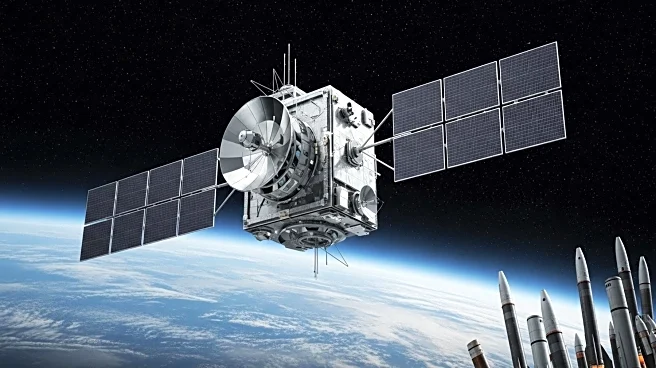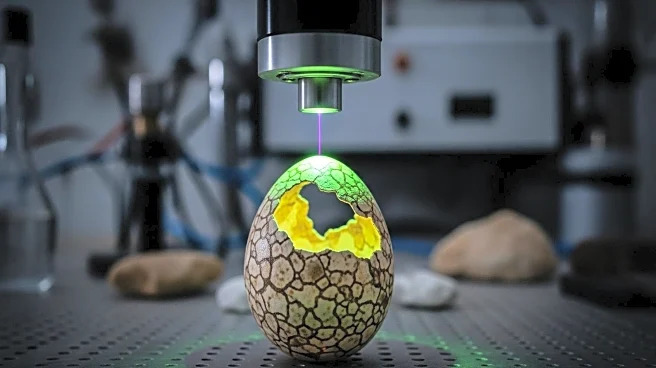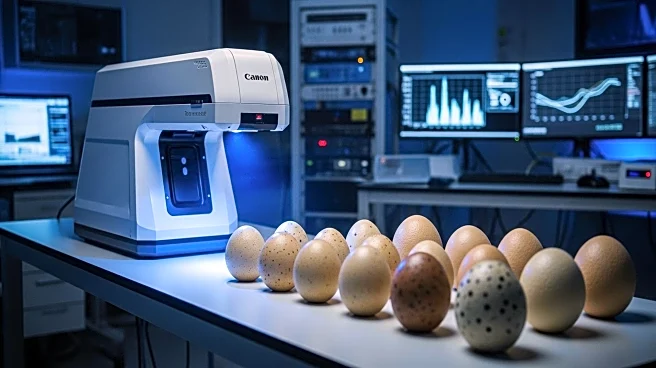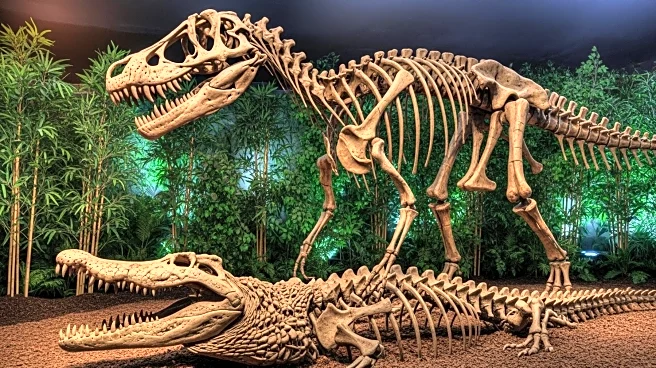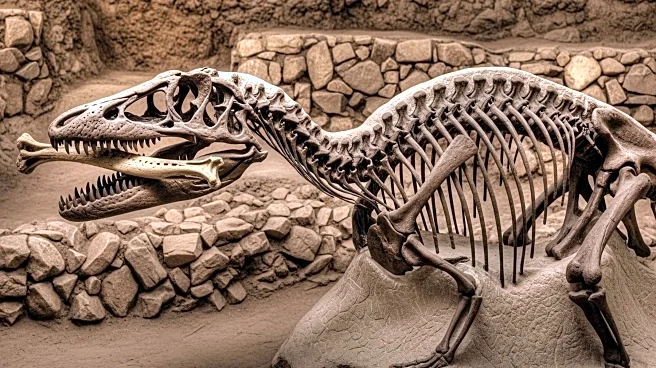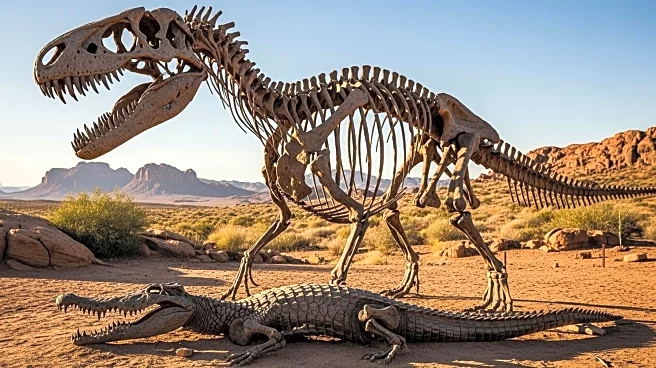What is the story about?
What's Happening?
Researchers in China have employed a micro-laser technique to directly date dinosaur eggs for the first time, offering a more precise age determination. By vaporizing small portions of the eggshell, they released radioactive uranium atoms, which decay into lead at a known rate. This method, known as U-Pb dating, allowed scientists to ascertain the eggs' age, placing them in the Upper Cretaceous period around 85 million years ago. This approach contrasts with previous methods that relied on dating surrounding materials, which introduced uncertainties. The eggs were found in Qinglongshan, China, a site rich in dinosaur eggs, providing a vital land-based record of the late Cretaceous period.
Why It's Important?
The ability to directly date dinosaur eggs offers significant insights into the late Cretaceous period, a time of dynamic climate change and increased volcanic activity. This period saw a reduction in dinosaur diversity, potentially affecting egg-laying patterns. The precise dating of eggs can help reconstruct paleo-environments, dinosaur migrations, and climatic fluctuations, contributing to our understanding of dinosaur evolution and extinction. The research underscores the importance of terrestrial records in studying Earth's history, complementing well-studied marine records.
What's Next?
The new dating technique could lead to more discoveries about the late Cretaceous period, potentially revealing stories about prehistoric climates and environments. Researchers may continue to apply this method to other fossilized eggs, enhancing our understanding of dinosaur life and extinction. The findings could also inform studies on environmental changes during the late Cretaceous, offering narratives about Earth's history.
Beyond the Headlines
The research highlights the importance of direct dating methods in paleontology, reducing uncertainties associated with indirect approaches. It also emphasizes the role of China’s rich fossil sites in advancing scientific knowledge about prehistoric life. The study may inspire further exploration of terrestrial records, which are less studied compared to marine records, providing a more comprehensive view of the Cretaceous period.
AI Generated Content
Do you find this article useful?



